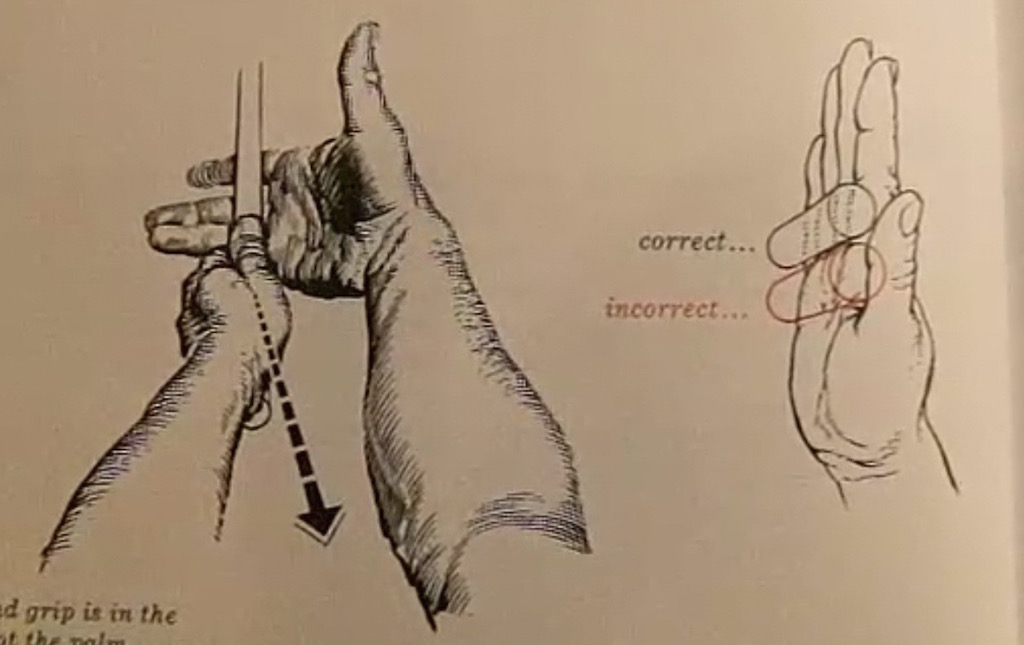Instruction
The Wedge Guy: What really needs fixing in your game?

I always find it interesting to watch how golfers interact with the practice range, if they do so at all. I certainly can figure out how to understand that some golfers just do not really want to get better — at least not enough to spend time on the practice range trying to improve.
What is most puzzling to me is how many golfers completely ignore the rationale for going to the range to at least warm up before they head to the first tee. Why anyone would set aside 4-6 hours of their day for a round of golf, and then not even give themselves a chance to do their best is beyond me. But today, I’m writing for those of you who really do want to improve your golf scores and your enjoyment of the game.
I’ve seen tons of research for my entire 40 years in this industry that consistently shows the number one goal of all golfers, of any skill level, from 100-shooter to tour professional, is simply to hit better golf shots more often. And while our definition of “better” is certainly different based on our respective skill level, the game is just more fun when your best shots happen more often and your worst shots are always getting better.
Today’s article is triggered by what we saw happen at the Valspar tour event this past Sunday. While Taylor Moore certainly had some big moments in a great final round, both Jordan Spieth and Adam Schenk threw away their chances to win with big misses down the stretch, both of them with driver. Spieth’s wayward drive into the water on the 16th and Schenk’s big miss left on the 18th spelled doom for both of them.
It amazes me how the best players on the planet routinely hit the most God-awful shots with such regularity, given the amazing talents they all have. But those guys are not what I’m talking about this week. In keeping with the path of the past few posts, I’m encouraging each and every one of you to think about your most recent rounds (if you are playing already this year), or recall the rounds you finished the season with last year. What you are looking for are you own “big misses” that kept you from scoring better.
Was it a few wayward drives that put you in trouble or even out of bounds? Or maybe loose approach shots that made birdie impossible and par super challenging? Might your issue have been some missed short putts or bad long putts that led to a three-putt? Most likely for any of you, you can recall a number of times where you just did not give yourself a good chance to save par or bogey from what was a not-too-difficult greenside recovery.
The point is, in order to get consistently better, you need to make an honest assessment of where you are losing strokes and then commit to improving that part of your game. If it isn’t your driving that causes problems, contain that part of practice or pre-round warm-ups to just a half dozen swings or so, for the fun of “the big stick”. If your challenges seem to be centered around greenside recoveries, spend a lot more time practicing both your technique and imagination – seeing the shot in your mind and then trying to execute the exact distance and trajectory of the shot required. Time on the putting green will almost always pay off on the course.
But, if you are genuinely interested in improving your overall ball-striking consistency, you would be well-served to examine your fundamentals, starting with the grip and posture/setup. It is near impossible to build a repeating golf swing if those two fundamentals are not just right. And if those two things are fundamentally sound, the creation of a repeating golf swing is much easier.
More from the Wedge Guy
- The Wedge Guy: It’s not all about distance
- The Wedge Guy: Are you really willing to get better at golf?
- The Wedge Guy: Anatomy of a wedge head
- LIKE25
- LEGIT1
- WOW0
- LOL2
- IDHT1
- FLOP1
- OB1
- SHANK3
Instruction
Clement: Weak grips are injuries in the making for many golfers

Like Jordan Spieth, trying to go to a bowed wrist at the top or in the downswing to square the club is placing you in a dangerous position for your lead wrist; you are one tree root or deep rough situation away from a nasty injury that could easily require surgery. Don’t let this be you.
- LIKE0
- LEGIT0
- WOW0
- LOL0
- IDHT0
- FLOP2
- OB0
- SHANK3
Instruction
Clement: Laid-off or perfect fade? Across-the-line or perfect draw?

Some call the image on the left laid off, but if you are hitting a fade, this could be a perfect backswing for it! Same for across the line for a draw! Stop racking your brain with perceived mistakes and simply match backswing to shot shape!
- LIKE1
- LEGIT0
- WOW0
- LOL0
- IDHT0
- FLOP0
- OB0
- SHANK1
Instruction
The Wedge Guy: The easiest-to-learn golf basic

My golf learning began with this simple fact – if you don’t have a fundamentally sound hold on the golf club, it is practically impossible for your body to execute a fundamentally sound golf swing. I’m still a big believer that the golf swing is much easier to execute if you begin with the proper hold on the club.
As you might imagine, I come into contact with hundreds of golfers of all skill levels. And it is very rare to see a good player with a bad hold on the golf club. There are some exceptions, for sure, but they are very few and very far between, and they typically have beat so many balls with their poor grip that they’ve found a way to work around it.
The reality of biophysics is that the body moves only in certain ways – and the particulars of the way you hold the golf club can totally prevent a sound swing motion that allows the club to release properly through the impact zone. The wonderful thing is that anyone can learn how to put a fundamentally sound hold on the golf club, and you can practice it anywhere your hands are not otherwise engaged, like watching TV or just sitting and relaxing.
Whether you prefer an overlap, interlock or full-finger (not baseball!) grip on the club, the same fundamentals apply. Here are the major grip faults I see most often, in the order of the frequency:
Mis-aligned hands
By this I mean that the palms of the two hands are not parallel to each other. Too many golfers have a weak left hand and strong right, or vice versa. The easiest way to learn how to hold the club with your palms aligned properly is to grip a plain wooden ruler or yardstick. It forces the hands to align properly and shows you how that feels. If you grip and re-grip a yardstick several times, then grip a club, you’ll see that the learning curve is almost immediate.
The position of the grip in the upper/left hand
I also observe many golfers who have the butt of the grip too far into the heel pad of the upper hand (the left hand for right-handed players). It’s amazing how much easier it is to release the club through the ball if even 1/4-1/2″ of the butt is beyond the left heel pad. Try this yourself to see what I mean. Swing the club freely with just your left hand and notice the difference in its release from when you hold it at the end of the grip, versus gripping down even a half inch.
To help you really understand how this works, go to the range and hit shots with your five-iron gripped down a full inch to make the club the same length as your seven-iron. You will probably see an amazing shot shape difference, and likely not see as much distance loss as you would expect.
Too much lower (right) hand on the club
It seems like almost all golfers of 8-10 handicap or higher have the club too far into the palm of the lower hand, because that feels “good” if you are trying to control the path of the clubhead to the ball. But the golf swing is not an effort to hit at the ball – it is a swing of the club. The proper hold on the club has the grip underneath the pad at the base of the fingers. This will likely feel “weak” to you — like you cannot control the club like that. EXACTLY. You should not be trying to control the club with your lower/master hand.
Gripping too tightly
Nearly all golfers hold the club too tightly, which tenses up the forearms and prevents a proper release of the club through impact. In order for the club to move back and through properly, you must feel that the club is controlled by the last three fingers of the upper hand, and the middle two fingers of the lower hand. If you engage your thumbs and forefingers in “holding” the club, the result will almost always be a grip that is too tight. Try this for yourself. Hold the club in your upper hand only, and squeeze firmly with just the last three fingers, with the forefinger and thumb off the club entirely. You have good control, but your forearms are not tense. Then begin to squeeze down with your thumb and forefinger and observe the tensing of the entire forearm. This is the way we are made, so the key to preventing tenseness in the arms is to hold the club very lightly with the “pinchers” — the thumbs and forefingers.
So, those are what I believe are the four fundamentals of a good grip. Anyone can learn them in their home or office very quickly. There is no easier way to improve your ball striking consistency and add distance than giving more attention to the way you hold the golf club.
More from the Wedge Guy
- The Wedge Guy: Golf mastery begins with your wedge game
- The Wedge Guy: Why golf is 20 times harder than brain surgery
- The Wedge Guy: Musings on the golf ball rollback
- LIKE91
- LEGIT16
- WOW6
- LOL1
- IDHT0
- FLOP4
- OB1
- SHANK9
-

 Product Reviews5 days ago
Product Reviews5 days agoThree Swing Challenge: Testing the Edel Array F-2 putter
-

 19th Hole2 weeks ago
19th Hole2 weeks ago‘You’re right, we’re always wrong!’ – Sergio Garcia receives warning during Open qualifier
-

 Equipment6 days ago
Equipment6 days agoWhat clubs do equipment free agents choose to use on tour? We found out
-

 News1 week ago
News1 week agoHighlights from the Wilson Golf Product Testing and Fitting Experience at Pinehurst
-

 News1 week ago
News1 week agoDavis Thompson’s winning WITB: 2024 John Deere Classic
-

 19th Hole1 week ago
19th Hole1 week agoMajor champ ‘disappointed’ not to be chosen as U.S. Ryder Cup captain
-

 Equipment2 weeks ago
Equipment2 weeks agoQ&A: The truth behind Bryson DeChambeau’s new Avoda irons from company founder Thomas Bailey
-

 Whats in the Bag2 weeks ago
Whats in the Bag2 weeks agoCam Davis’ winning WITB: 2024 Rocket Mortgage Classic



















